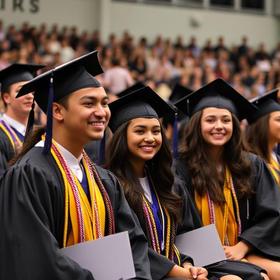Introduction
Equity and access remain central concerns in today’s higher-education landscape. For students from underserved backgrounds—many first-generation, low-income, or from historically excluded racial or ethnic groups—the journey from secondary to postsecondary education is often fraught with additional obstacles. While both community colleges and private schools play distinct roles in this process, their potential to support underserved students differs significantly. This article examines how equity and access manifest for two key populations: graduates of private schools from underserved backgrounds and students entering community colleges, particularly in 2025. We explore what works, what still needs improvement, and what parents, students and educators should know.
Defining the Terms: Equity, Access and Underserved Backgrounds
Equity and access refer to more than merely admitting students; they imply that students are not only admitted but supported to succeed, regardless of background. Access means the door opens. Equity means the path is fair and supports completion. Research emphasises that access without signals of completion may perpetuate inequities.
Underserved backgrounds often include students who are low-income, first-generation, Black or Hispanic/Latinx, older adult learners, or from rural or immigrant communities. A 2024 study found that at community colleges, students from low-income backgrounds, or who are older, Black or Hispanic, have significantly lower bachelor-degree attainment rates. Community College Research Center+1
Community colleges are typically open-access two-year institutions that serve a large portion of the higher-education population—including underserved students. Private schools, in this context, refer to K-12 institutions funded privately (often via tuition) which may serve more affluent populations—but increasingly some private schools also target underserved students via scholarship or mission-driven models.
By comparing how these two sectors perform with respect to students from underserved backgrounds, we can draw insights for policy, practice and parent/educator decision-making.
Community Colleges: Access Points, Completion Gaps
Widespread Access, But Uneven Outcomes
Community colleges remain critical access points: nearly 40 % of all undergraduates in the U.S. begin at such institutions. However, despite the open-access promise, students from underserved backgrounds often face structural challenges in securing pathways to bachelor’s degrees. A 2024 report found that only about one-third of community-college students transfer to a four-year institution, and only about 16 % of community-college entrants earn a bachelor’s within six years—rates are even lower for low-income (11 %), Black (9 %) and Hispanic (13 %) students.
Key Barriers
– Transfer bottlenecks: Many community-college students face difficulties navigating transfer requirements, credit-loss, or articulation issues.
– Support services gaps: Students from underserved backgrounds often arrive with fewer academic prerequisites or less family guidance around college. Effective advising, mentoring and>– Resource constraints: Many community colleges are under-funded, limiting the ability to design equity-minded supports that target historically marginalized students.
Emerging Best Practices (2025 Update)
Recent research identifies promising practices that emphasise equity and access for underserved students in community college settings:
Routine use of disaggregated data and metrics to monitor outcomes by subgroup and target supports accordingly.
Structured guided-pathway programs that reduce complexity and direct students toward credentials with clear value.
Partnerships with high schools and dual-enrollment programs to build readiness early for underserved students.
Table 1: Community College Access vs Completion for Underserved Students
| Metric | All Community-College Entrants | Low-Income Students | Black Students | Hispanic Students |
|---|---|---|---|---|
| Transfer to 4-year within 6 years | ~33 % | — | — | — |
| Earn bachelor’s within 6 years | ~16 % | ~11 % | ~9 % | ~13 % |
This shows that while community colleges provide access, the completion gap remains wide for underserved students.
Private Schools and Underserved Graduates: Opportunity & Challenge
While private schools are not traditionally thought of as access engines for underserved backgrounds, some mission-driven private schools and scholarship models do serve low-income or under-represented students. Nevertheless, the broader literature shows that private schooling is often associated with advantages in university access and outcomes—but usually for more affluent backgrounds.
Evidence of Private School Advantage
Research in the United Kingdom finds that students who attend private schools are more likely to enter elite universities and earn higher grades—even controlling for socioeconomic background and prior attainment. For instance, private-school students may have a 10 percentage-point greater probability of gaining admission to a top university compared to state-educated peers. Cambridge Home School Online+1
In the U.S. context, longitudinal research also found that attending a private high school had a statistically significant positive effect on college enrollment and degree attainment. ResearchGate
The Access-Equity Tension
These findings raise important questions about equity and access:
Because private schools often require tuition, many underserved students are excluded or must rely on scholarships, limiting scale.
The resource gaps between private and public schools (class size, extracurriculars, university-counselling) contribute to unequal outcomes. University College London+1
Simply attending a private school does not automatically resolve the structural barriers faced by students from underserved backgrounds; what matters is the extent to which the school is intentionally mission-driven to support equity.
Implications for Underserved Private-School Graduates
For students from underserved backgrounds who do attend private schools (often via scholarship or mission-admission), key factors that improve equity and access include:
Strong academic counselling and university-readiness supports
Peer-and-mentor networks to mitigate cultural capital gaps
Financial aid and transitional support into college
Intentional tracking of outcomes by socio-demographic subgroup
Thus, the private-school sector can contribute to equity and access—but only when it is designed with underserved students in mind, rather than simply enrolling more affluent students.
Comparative Insights: Community College vs Private School Routes
Access Profiles
Community colleges: High access for underserved students; low cost, open-admission, local availability.
Private schools: Lower access for underserved students overall (unless scholarship-based); higher resources, possibly stronger college-prep pipelines.
Completion and Outcomes
Community colleges: Access is strong but completion (transfer + bachelor’s) remains weak for underserved populations unless supports are in place.
Private schools: For those underserved students who gain admission and are supported, outcomes can be favorable, but the number of such students remains small and the system is not generically designed for mass equity.
Equity Levers
Key levers to enhance equity and access across both contexts include:
Early academic exposure (dual enrollment, bridging programs)
Robust advising and mentoring
Financial supports and eliminating hidden cost barriers
Data-driven institutional practices with intentional focus on historically excluded groups
Strong articulation and transfer pathways (for community colleges)
Mission-driven private-school scholarship and support models (for private schools)
Box 1: A Real-World Example
At one community college participating in the Urban Institute-led “Advancing Community Equity and Upward Mobility (ACE-UP)” initiative, staff reported that using disaggregated data to track underserved students’ progress allowed them to deploy targeted advising, connect students to peer networks and monitor completion by subgroup.
On the private-school side, while data are sparse, research suggests that private schools that allocate significant bursaries and focus on underserved populations (rather than simply affluent families) may narrow rather than widen equity gaps—but such models remain the exception rather than the rule. OUP Academic+1
Guidance for Parents, Students and Educators
For parents and students from underserved backgrounds weighing these pathways—and for educators guiding them—here are actionable considerations:
Ask about supports: Does the community college or private school offer targeted support (mentoring, first-generation student networks, financial aid)?
Examine transfer and completion data: Especially in community college settings, ask: “Of the students like me, how many transfer and complete bachelor’s degrees?”
Evaluate college-readiness and enrolment pipelines: In private schools, check how many alumni from underserved backgrounds go to four-year colleges and the resources they receive.
Understand hidden cost barriers: Transportation, textbooks, data connectivity, and childcare can disproportionately affect underserved students.
Encourage early exposure: Take advantage of dual-enrollment, summer bridge programs, and early advising to build credentials and momentum.
Promote institutional accountability: Encourage schools and colleges to monitor outcomes by subgroup, publish those outcomes, and commit to continuous improvement.
Conclusion
In 2025, equity and access for underserved students are more than buzzwords—they are essential to the national higher-education mission. Both community colleges and private schools have roles to play in expanding opportunity—but they operate in very different ways.
Community colleges offer broad access and are a major part of the equity solution, but unless they explicitly design for underserved students, completion and upward mobility may remain limited. Private schools, by contrast, have the potential to provide strong college-prep environments; yet unless they commit to serving underserved students intentionally, they risk reinforcing existing inequities.
For prospective parents, students and educators, the key is to recognise that access opens the door—but only equity ensures that students from underserved backgrounds have a fair shot at success. By focussing on supports, pathways and outcomes, we can move closer to a higher-education system where access truly means opportunity for all.
Keywords: equity and access, community colleges, private school graduates, underserved backgrounds, college success, transfer pathways, higher education equity














